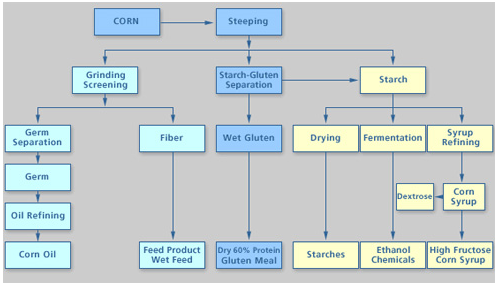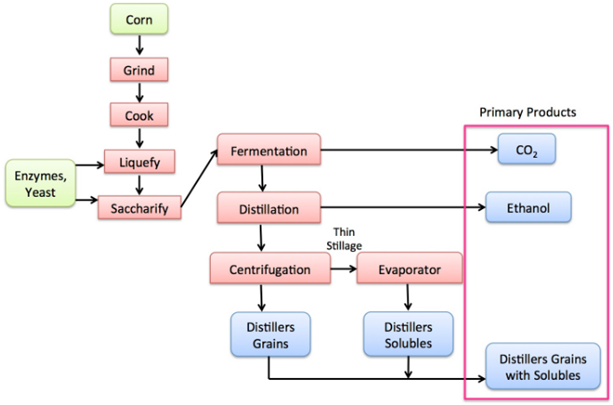Industrial Fermentation
DO YOU WANT TO EXCEL IN INDUSTRIAL FERMENTATION ASSIGNMENT? HIRE TRUSTED TUTORS FROM EXPERTSMINDS AND ACHIEVE SUCCESS!
Question: (i) Describe one example of industrial fermentation.
(ii) Explain the advantages and disadvantages of a microorganism using fermentation to generate energy compared to aerobic respiration.
Answer: Microbial fermentation to make cheddar cheese:
The most popular and very commonly used type of cheese is cheddar cheese. It is ivory or white to orange or light yellow in colour and has a long shelf life. The cheddar cheese is produced from milk through microbial fermentation. The various steps involved in microbial fermentation to produce cheddar cheese are as follows:
Reactants: Pasteurized milk, starter culture, rennet or chymosin
Starter cultures: Lactococcuslactis ssp. lactis and Lactococcus lactis ssp cremoris
Products: Cheese and Whey
Process: 1. Pasteurization
2. Starter culture
3. Renneting
4. Cutting
5. Stirring / Scalding
6. Cheddaring
7. Milling
8. Mixing
9. Pressing
10. Waxing/ packing
11. Curing
1. Pasteurization: The raw milk is pasteurized with heat treatment at 72-730C for 15-20 sec. it is done to inactivate alkaline phosphatase and to remove pathogenic microorganisms from raw milk.
2. Starter culture: Lactococcuslactis ssp. lactis and Lactococcus lactis ssp cremoris are mainly used as starter cultures for making cheddar cheese. This mixture of single strains are used because of heat resistance of Lactococcuslactis ssp. Lactis and no production of bitter peptides during scalding of Lactococcus lactis ssp cremoris. The acids produced by these strains makes the milk protein casein less soluble and makes them clump.
ORDER NEW INDUSTRIAL FERMENTATION ASSIGNMENT & GET 100% ORIGINAL SOLUTION AND QUALITY WRITTEN CONTENTS IN WELL FORMATS AND PROPER REFERENCING.
After adding starter culture, stir thoroughly, cover and incubate for 18-24 hrs at 250C in an incubator.
3. Renneting: Rennetis an acid protease enzyme that cleaves the milk protein and it makes casein even less soluble. The activity of rennet will be optimum at acidic conditions which is provided by lactic acid bacteria. This is usually done for 35 minutes.
4. Cutting: The gel so formed now is cut into a 5-10mm pieces.
5. Stirring / Scalding: Now the whey which contains curd is stirred continuously till both whey and curd are separated. It is done for about 30 min at 400C.
6. Cheddaring: It is the most important step in production of cheddar cheese. In this step the curd blocks are piled up to expel moisture, then milled, grounded, molded, pressed. Then the whey is drained off and the process is repeated.
7. Milling: The curd is then cut into strips of finger size.
8. Mixing: After milling, it is mixed with salt to retard the growth of lactic acid bacteria and pressed in molds for about 30 min at 400C.
9. Pressing: The salted curd which are kept in molds are now pressed under vacuum and at lower pressures.
10. Waxing/ packing: The formed cheese is packed by wrapping in plastic foils.
11. Curing: curing influences the flavor and it is done for 2-10 months at 80C.
Thus, the cheddar cheese was prepared by microbial fermentation. Whey, the yellowish liquid that is produced during fermentation, contains sugars and proteins. The whey can be reprocessed and the sugars and proteins in it can be reused. (Mary Anne Drake, 2000) (Josefin Lundin, 2015)
The advantage of fermentation over aerobic respiration is that the fermentation can be performed in both aerobic and anaerobic conditions. Thus fermentation is useful in producing energy in the absence of oxygen where as aerobic respiration strictly needs oxygen for energy production. Moreover the microbial fermentation improves the taste of food and increases preservation of food.
The disadvantage of fermentation is that it produces less energy (only 2 ATP molecules) when compared to aerobic respiration (36 ATP molecules). ("Fermentation")
NEVER BE CAUGHT IN PLAGIARISM, AVAIL INDUSTRIAL FERMENTATION ASSIGNMENT HELP SERVICE OF EXPERTSMINDS.COM AND SAVE HIGHER MARKS!
Question 2: (i) Compare and contrast biofuels and fossils fuels.
Answer: Comparision of biofuels and fossil fuels: (Madusha, 2017) ("Biofuels vs Fossil Fuels")
|
Biofuels
|
Fossil fuels
|
|
Source: Biological materials like corn, soybeans, sugarcane, woodchips, leaves
|
Source: Carbon based sources
|
|
Examples: Ethanol, biodiesel, vegetable oils, methane
|
Examples: Coal, oil, natural gas
|
|
Renewable energy sources
|
Non renewable energy sources
|
|
Costlier than fossil fuels
|
Cheap
|
|
Less commonly used
|
More commonly used
|
|
Ecofriendly
|
Possess health and environment risk
|
|
Produced industrially
|
Formed naturally
|
|
Produced from living matter
|
Produced from geological process
|
|
Energy per unit mass is less
|
Energy per unit mass is more
|
|
Safer methods of production
|
Destructive methods of production
|
|
Lower emission of unfavourable gases
|
Higher emission of unfavourable gases
|
Conversion of corn to ethanol is a multiple step process
- The first step in ethanol production is milling of corn either by wet or dry milling.
- The production of alcohol from corn by wet and dry milling process are depicted in the following figures.
- The main step in these processes is fermentation which is done by adding yeast. The most commonly used yeast is saccharomyces cerevisia, a unicellular fungus.
("How Corn is Processed to Make Ethanol")


The original source of energy in fossil fuels is from sun which is captured through the process of photosynthesis.
(ii) Discuss whether or not you think biofuels are viable alternative to fossil fuels as a renewable energy source.
Answer: Biofuels are not a viable alternative to fossil fuels. Although biofuels are ecofriendly and indulges safer production technologies, they are not considered as viable alternatives to fossil fuels because they take up land resources and affect food production. Also they are neutral carbon emitters but they do not guarantee cutting of carbon emissions. The more alternatives will be solar, wind, tidal and nuclear energies.("Are Biofuels a Viable Alternative to Fossil Fuels?") (Andrew Steer and Craig Hanson, 2015)
24/7 AVAILABILITY OF TRUSTED INDUSTRIAL FERMENTATION ASSIGNMENT WRITERS! ORDER ASSIGNMENTS FOR BETTER RESULTS!